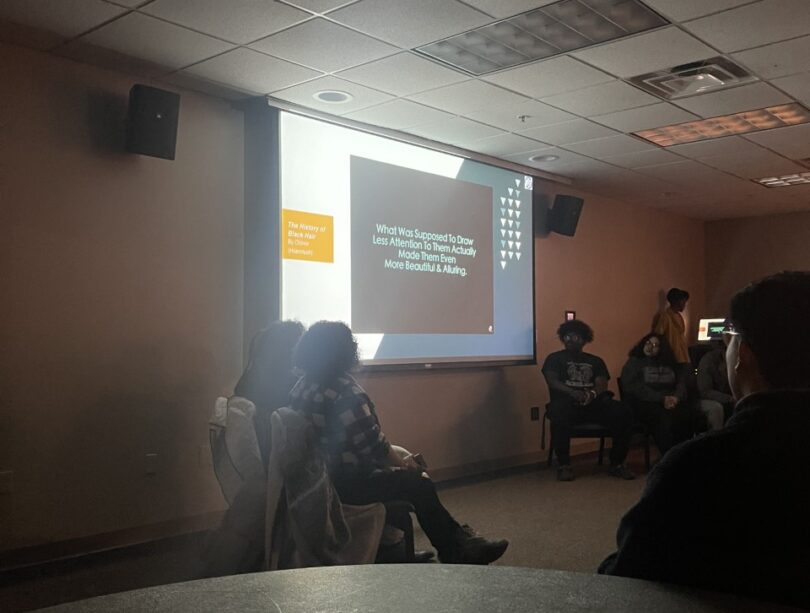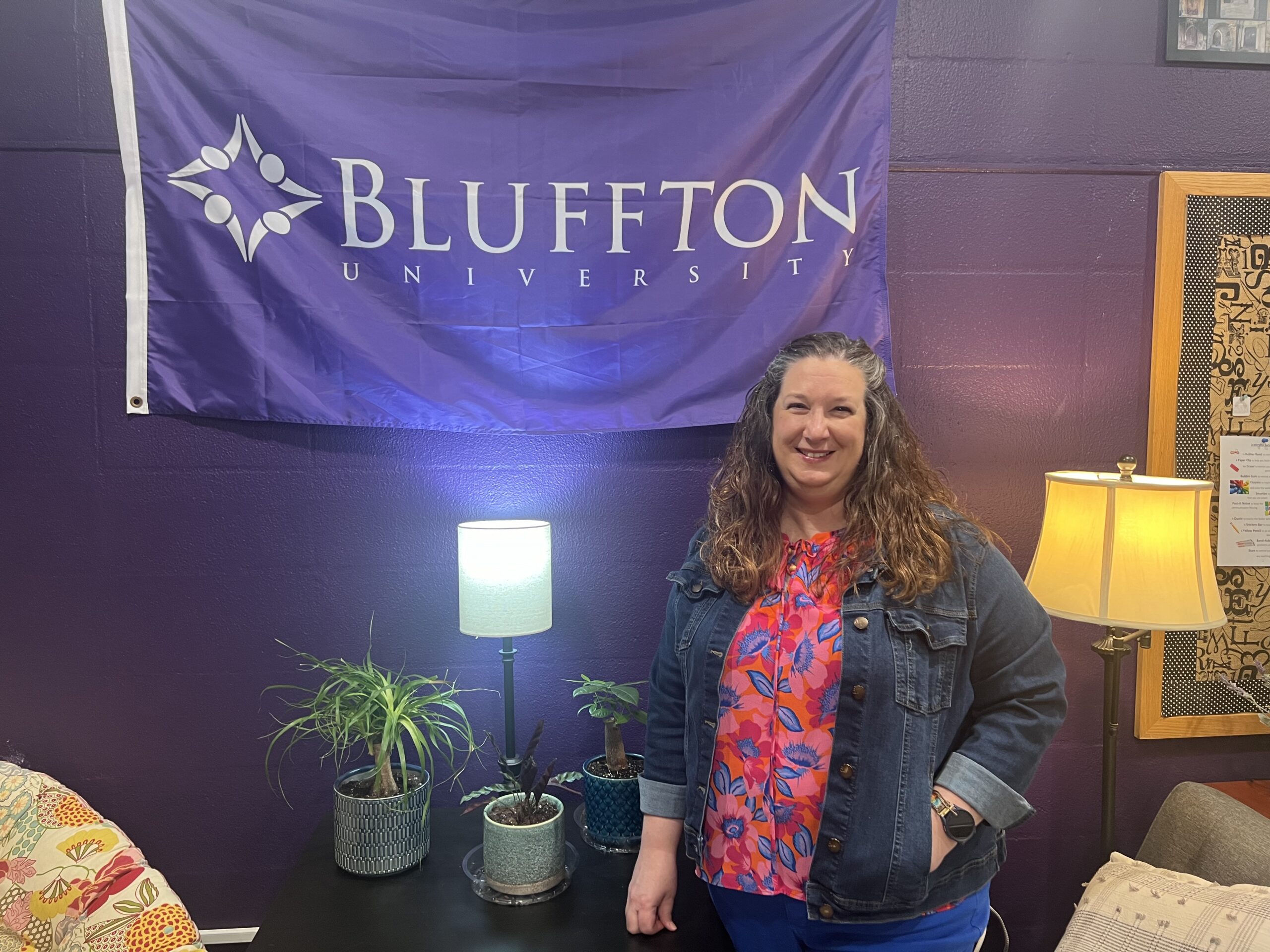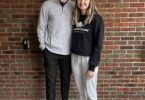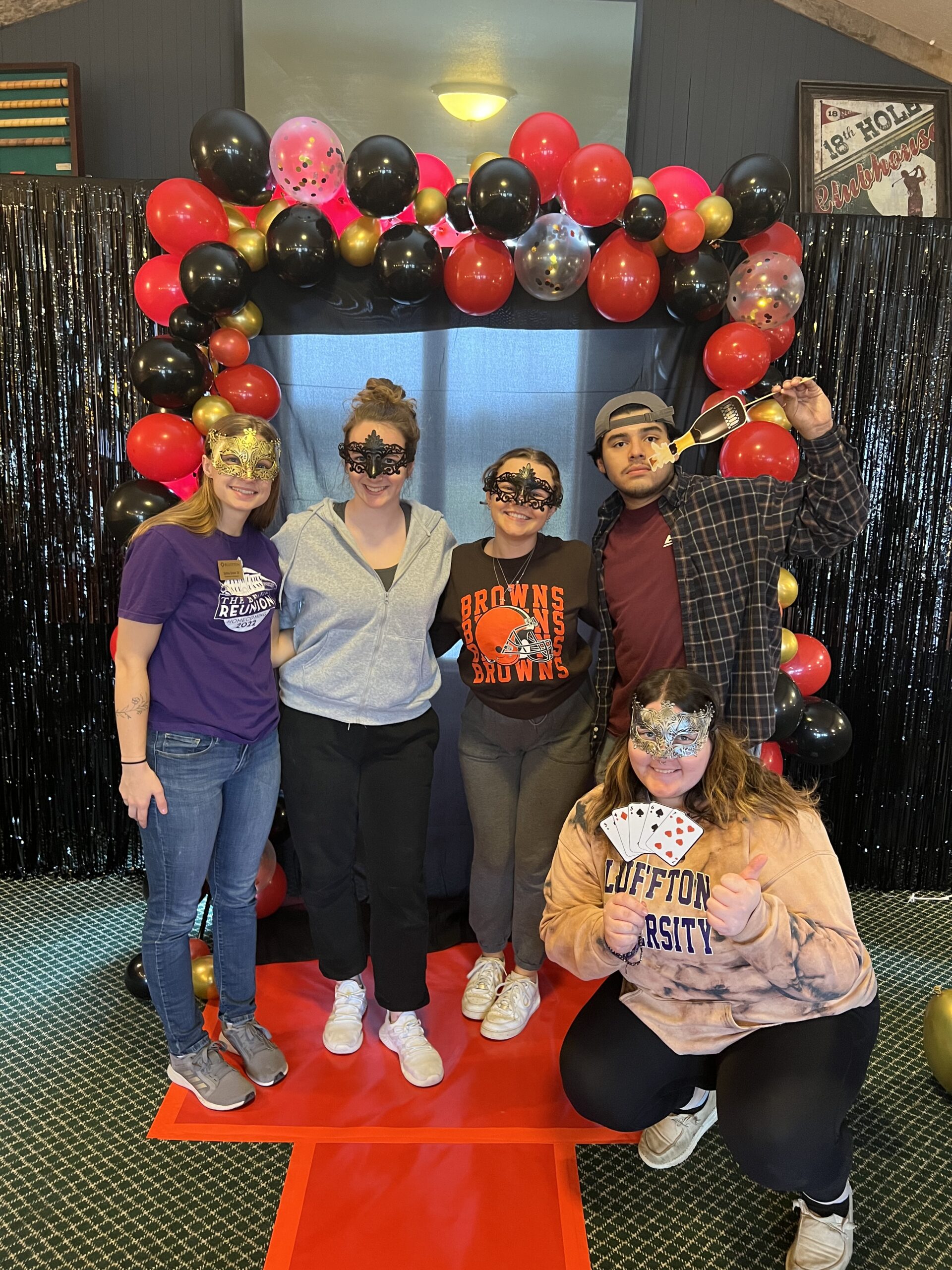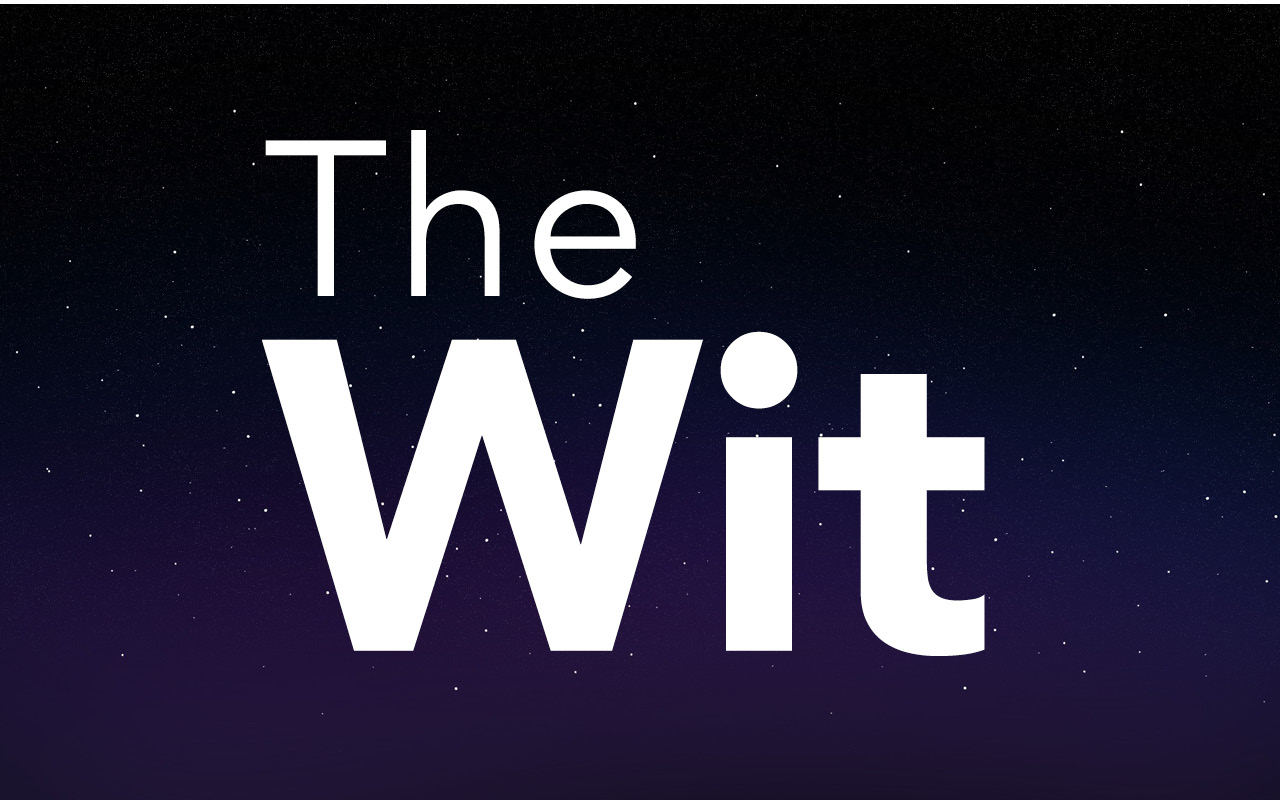By Hayley Lewis
Did you attend the Thursday Night Spotlight Black Hair Panel? If not, here’s everything you need to know about the Feb. 23 event hosted by MSO. The event started off with introductions and two videos covering the history and appreciation of black hair followed by a Q&A.
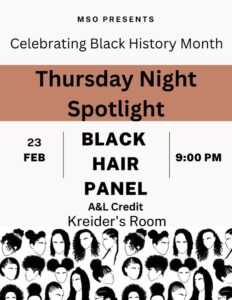
Poster advertising Black Hair Panel event. Photo provided by MSO.
The history behind black hair originated from many different ethnic groups and the first goes back to ancient Egypt. This is when hair styles appeared on many ancient artifacts. It played a major role socially for status and identity. It was a way to identify someone’s ethnicity, social rank, age, marital status, wealth, fertility, manhood and religion.
In 1344, slavery began when Europeans would enslave African men and women of all social status and trade them on the west coast of Africa. Many Europeans would shave the men and women’s hair, which was seen as an unspeakable crime to many tribes.
Then in 1619, slaves came to Jamestown, a colony which is now considered Virginia, for the first time, after a long three months of traveling. The hair of many of those who had been enslaved was matted upon arrival and slavers told them not to speak in their native language, do any traditional dances or maintain their hair styles. This is when African hair traditions began to disappear.
“Straight-haired slaves were bid higher at auctions because of the resemblance to that of the slave owner’s own features since African complexion and hair was seen as unattractive during this time,” said the ‘History of Black Hair’ video.
Then in the 1800s without proper hair care tools to maintain their hair, individuals with textured hair had to use baking grease, butter and sheep brushes. In 1865, more than half a century later legal slavery in the United States ended but left emotional and psychological scars that persist today.
One of the scars is the terms “good hair” and “bad hair”. “Good hair” is that of finer, curlier or closely resembled to that of the European hair. It became a prerequisite for getting jobs, entering schools, churches and social groups during this time.
In the 1920s, Jamaican political activist Marcus Garvey urged his followers to embrace their natural hair and reclaim their African aesthetic.
“You must remove the kinks from your mind, not your hair,” said Garvey.
In 1962, famous actress Cicely Tyson wore cornrows on the TV drama “Eastside Westside.” This was a big deal since braids were not considered a style to be worn outside of the home.
Then Angela Davis became a black icon with her large Afro, thus making the hair style a symbol for black power and pride. Kinky hair and dark skin became embraced and the phrase “black is beautiful” was coined.
In 1968, Diahann Carroll was the first black woman to star in a TV network series and was said to be the black version of the “All American girl.” Except in 1971, Melba Tolliver was fired from the ABC affiliate for wearing an Afro. This caused a great deal of controversy.
In the 2000s relaxers, braids and other styles were explored by African Americans and around 2009 there was an increase in women wearing their hair naturally. This is referred to as the “natural hair movement.” In 2006, black hair care became a billion-dollar industry with 80% being sold to black women and only 3% being owned by black women. Today black women wear their hair in a variety of styles.
“To truly embrace and understand our hair especially in its natural state, and how it directly relates to our culture, we must understand its history and be willing to maintain a certain level of integrity and respect regarding it,” stated the ‘Hair Love’ video.
After the video special guest hair stylist Hope White was asked many questions about black hair. Among those questions were “What is the difference between natural hair and relaxed hair?”, “What are protective styles and why are they important?”, “How do you keep hairstyles to stay in place?”, “Why do people wear bonnets, scarfs, and durags?”, “What are the different hair types?”, “What products or methods are used to define curls?”, “What is shrinkage?”, “What is a healthy hair care routine?” and “Is there a difference between dreads, dreadlocks, and locks?”.
In the end, an event panel including five Bluffton University students were asked questions as well. The panel was composed of Darius Boeke, Haley Byrnes, Nadia Button, Andrew Matthews and Anthony Adams. They were asked questions like “What does your hair mean to you?”, “Who taught you how to do your hair? Who taught you how to love your hair?”, “Have you ever been ashamed of your hair or has anyone shamed you for your hair?”, “What is a memory you have of someone doing your hair?” and more.
This event was an educational and deep dive into black hair and its history. If you have any questions, reach out to those on the panel or Leslie Beasley for more information on how to start your educational journey in black hair.

